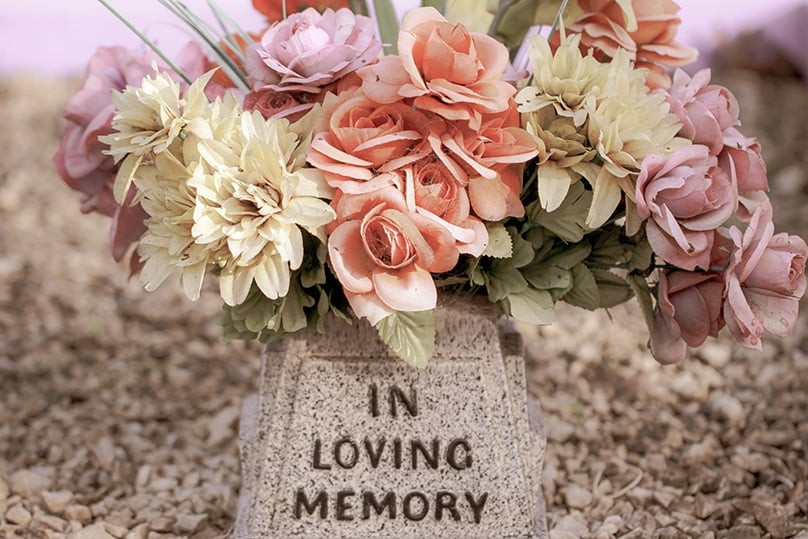
By Brigid Meney
Voluntary Assisted Dying Laws commence operation on 28 November, making interventions designed specifically to end a life, legal in this state.
The significance of this cannot be ignored, for health providers and practitioners. A core commitment to our ministry of healing is undermined by the deliberate act of ending life, for it makes no sense to say we can heal, by killing.
Much has been said in the debate that led to this legislation, and similar legislations introduced around the country. Catholic Health Australia and its members have, at every step, focused on advocating for the dignity of the individual, and how such laws are inconsistent with our ethic of care.
This ethic of care has not emerged in response to Voluntary Assisted Dying laws. It is a commitment of significant longevity based on the parable of the Good Samaritan who cared for a man who had been beaten, robbed and left to languish on the side of the road.
The Samaritan not only cared for the man and offered him comfort, he paid for his care and promised to continue to check on his progress.
This story guides us to not only deliver care and compassion, but with the structure placed around his care, calls us to embed such care and compassion in an institutionalised form.
It’s been 133 years since the Sisters of Charity delivered Australia’s first hospice to care for the dying, in this state of NSW.
At a time when healthcare in Australia was rudimentary at best, and universal coverage had not been conceived as a possibility, these sisters led the country in delivering dignity through care for those who often had nowhere else to go.
Similarly, Calvary Healthcare has pioneered new ways of delivering this compassionate care for a person in their final days.
Responding to a desire of individuals to spend their final days in their home, Calvary developed a new model of delivering palliative care to individuals in their home.
This model has been recognised and adopted by many other providers of healthcare now, but Calvary led the country responding to this need.
Many of us have experienced this on a personal level. When my own grandparents were in residential aged care, I still recall the pivotal role Sr John of Nazareth House played.
She would walk from room to room with assistance from her frame, sometimes in the early hours of the morning, providing comfort to people and their families in the final weeks, days, and hours of life.
I do not share this story to romanticise the experience, these moments are not glamorous, they are raw and real. But I had seen her so many times over the years visiting, it provided us all with some solace to know that when my grandparents time came, she would be there. And of course, she was.
These are only a few select examples of our Catholic commitment to end of life care. But in the face of new laws that allow the administration of a lethal substance, the question remains for our ministry and those committed to it, where to from here?
It means that our commitment to what we provide, remains more important than ever.
Faced with the prospect of patients and residents who may choose to explore the now legal possibility of ending their own life, or requesting someone to do it for them, we must showcase the best of what our palliative care services can offer.
There are many reasons an individual might choose to explore this option now afforded legally to them, including a fear of pain, feelings of hopelessness, as well as experiences of unmet care needs.
Conversations initiated by the resident or patient regarding the desire to pursue Voluntary Assisted Dying might bring these feelings more commonly to the surface. And we are called to respond, sensitively and compassionately to these.
Participating in an act involving the administration of a legal substance is, of course, a line that must not be crossed and all Catholic facilities must continue to make this abundantly clear.
But we do not abandon people. By showcasing the very best of our physical, mental and spiritual care practices, we can respond to these unmet needs and show through our actions that there is another choice.
This vocation, inspired by the Bible, brought to life by religious communities who pioneered an egalitarian approach to health care, should continue to inspire us, despite the changes in law.
We must continue to improve and deliver on our commitments to the dying and those suffering.
This requires the State Government to recognise that the “voluntary” aspect of Voluntary Assisted Dying laws, which they have been careful to point out in the parliamentary debate on the legislation can only be truly upheld with a strong commitment to adequate and sustainable palliative care services.
In recent weeks with substantial cuts to palliative care in NSW announced, this has been appropriately critiqued.
Without the choice afforded through a strong commitment to palliative care funding, a term like “voluntary” is meaningless, because it becomes rather easier to access lethal substances than it is to access care in your final days.
Brigid Meney is Director of Strategy and Mission at Catholic Health Australia.
